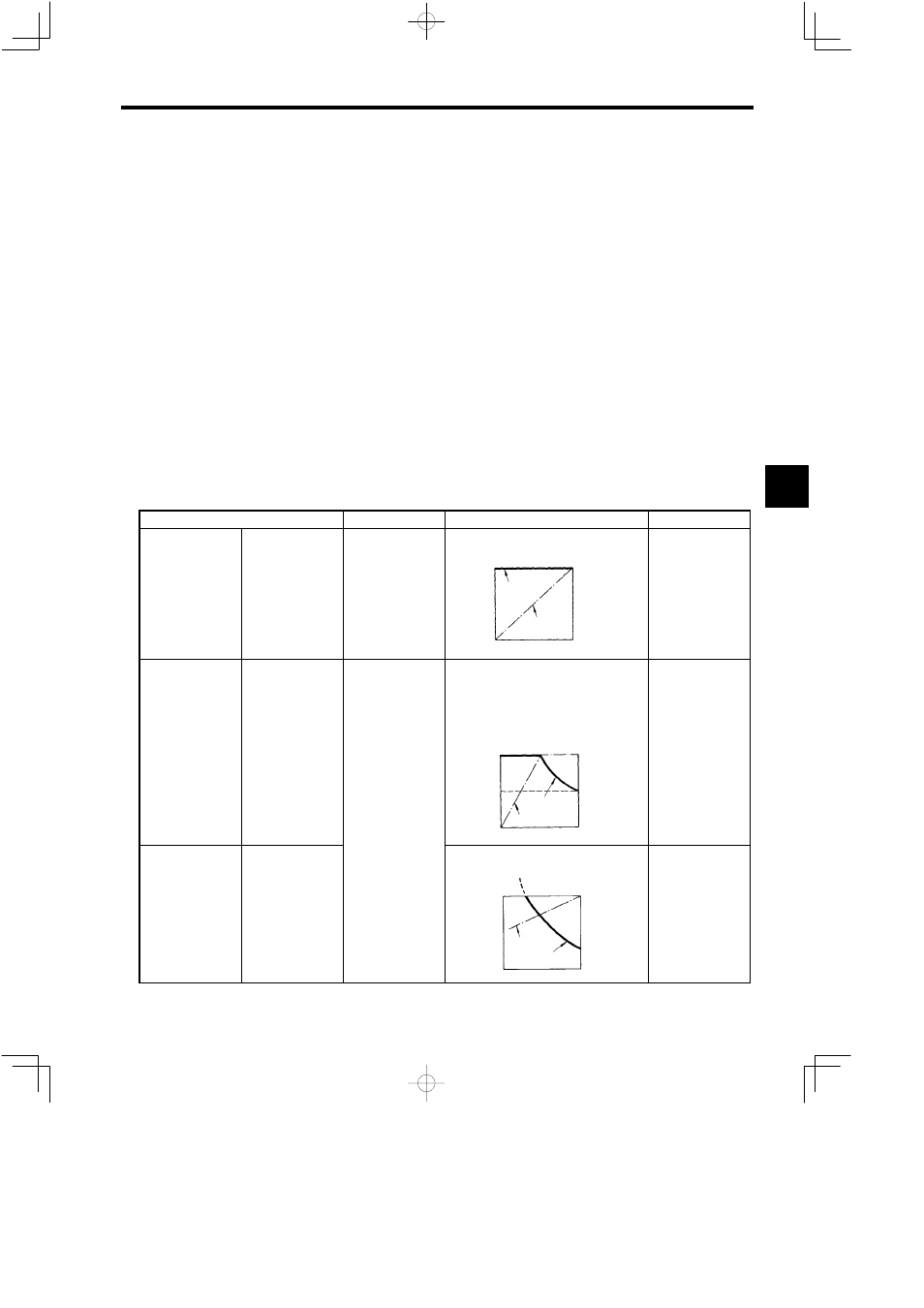3 determining drive capacity, 1 load drive capacity – Yaskawa Varispeed 626M5 User Manual
Page 283

15.3 Determining Drive Capacity
15 -11
15.3 Determining Drive Capacity
When controlling machine speed, an inverter drive must supply torque to accelerate and decelerate the drive
system (couplings, machine, and motor), as well as torque to match the characteristics of the machine that
makes up the motor load. Consider the following points when determining drive capacity.
D
Make clear the ratings to be used (continuous rating, short-time rating, and repetitive rating) to suit
the load characteristics.
D
Consider the efficiency of the motive force transmission mechanism and the load dispersion, and select
a drive capacity greater than the motive force required by the load.
D
Select a capacity that can sufficiently provide the startup torque and maximum torque required by the
load. Use the following equation to select the drive capacity.
Drive load ≧ Motive force to drive the load mechanism + Motive force to accelerate and decel-
erate the load mechanism to the required speed
The above equation shows the method for calculating load drive force and acceleration/deceleration motive
force.
15.3.1 Load Drive Capacity
The torque-speed characteristics of the load mechanism that uses the VS-626M5 are classified as listed
in Table 15.3. The methods of calculating load drive capacity that are described are typical examples.
Table 15.3 Typical Load Torque-Speed Characteristics
Load Characteristics
Load Examples
Speed-Torque Characteristics
Motor Capacity
Fixed Torque Load
Load torque over
speed is a fixed
load.
Usually a friction
load.
Conveyers
Cranes
Winches
Other friction loads
and gravity loads
1.0
0
Load torque
Torque
and
output
Load output
Speed
1.0
Load torque is fixed regardless of speed.
Output is proportional to speed.
Motor capacity is the
same as the maximum
speed load capacity.
Fixed Output Load
Required output
over speed is a
fixed load.
Center drive low ten-
sion winders
Main axis of ma-
chine-tool
V
t
l
Within fixed torque range:
Load torque is fixed regardless of speed.
Output is proportional to speed.
Within fixed output range:
Output required by load is fixed.
Load torque is inversely proportional to speed.
1.0
0
Load torque
Load output
2.0
0.5
1.0
Required rated output
when using a drive
with fixed torque
characteristics is as
follows:
Required output =
Load output x Fixed
output control ratio
1/2
Reduced Output
Load
Load torque over-
speed is a variable
load.
Load has the inter-
mediate characteris-
tics of fixed output
load and fixed
torque load.
Veneer rotor relays
Intermediate speed-torque and output charac-
teristics of fixed torque load and fixed output
load
1.0
0
Load output
Load torque
1.0
Motor capacity is the
same as the maximum
speed load capacity.
15